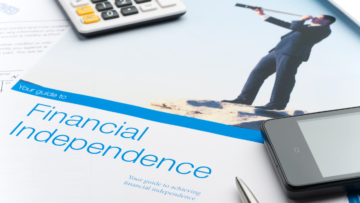We’re already half way through 2018, so it may be time to assess your ongoing retirement plan to make sure you’re still on track with the progress you’re making.
Your current plan might include extensive travel, furthering your education, or spending more time with loved ones. Similarly, it might involve retiring in your early 60s, or mid-60s, or late 60s. But while mapping your retirement in advance is definitely beneficial, you’ll need to be prepared to adjust yours if circumstances change.
Here are three common indicators that may signal when you and your retirement savings need to get back on the same page.
1. You’re behind on savings, or started saving too late
According to a report by the U.S. Government Accountability Office, almost half of U.S households 55 and over have no retirement savings. And while you certainly have options for catching up, you’ll probably need to adjust your thinking if you want the retirement you hoped for.
For example, say you’re planning to retire at 66, but by age 65, you realize you have just $100k to your name, even after factoring in Social Security into the equation – that simply won’t cut it. At that point, it pays to shift gears and find a way to compensate for that shortfall, whether it means retiring a little later than planned, or working part-time during retirement, even if your original plan doesn’t call for that.
2. Your investments are coming up short
Despite saving in tax-advantaged retirement accounts, you’ll need your portfolio to bring in a modest return. If that’s not the case, you may need to make some changes to your retirement plan to bridge whatever shortfall you end up facing.
For example if you contribute $500 a month to a retirement account over a 30-year period, you expect your investments to yield a 7% average annual return. In that case, you’d end up with about $567,000 all in. But what happens if your portfolio only manages an average yearly 5% return? Suddenly, you’re looking at just $398,000, and that could make a huge difference over the course of your retirement.
If you come to find that your investments aren’t doing as well as expected, you’ll need to find ways to compensate, whether it’s working longer than you planned, putting aside more money each year going forward, or finding ways to live off the smaller amount you wind up with.
3. You’re spending more than you planned for
If you’re frightened to open your statements, it’s time to check your spending and income strategy.
Figuring out what you’re spending now can serve as a good jumping-off point toward predicting what you may need for everyday expenses during your retirement. If you’re already keeping a budget or keeping tabs on your expenses, then you’re probably ahead of the game. But if you’re not, try writing down how much you spend for such things as food, clothes, entertainment, dining, travel, etc., every day for about two months, and then factor in expenses like health care or long-term care, which will probably go up as you get older.
You can also try using a retirement calculator, which will help determine how much income will you need in retirement. If you’re not sure whether you’re on the right track to meet your retirement goals, consider speaking to a CKS Summit Group Retirement Income advisor for help crafting a strategy that may work for you.
What about the 4% withdrawal rate? Christine Benz for Morningstar suggests “If you have your spending totals for the year to date through the middle of the year you can just extrapolate out, annualize that number and then you divide that by your current portfolio balance to arrive at your withdrawal rate. If you are a new retiree, you probably want to come in close to that 4% withdrawal guideline. If you are an older retiree, you can probably take a more aggressive withdrawal rate than just that 4%.”
Ignoring warning signs like the ones above will only end up hurting you in the end, so keep track of your savings, review your investments regularly, and study your expenses as they evolve.
Final thought
Though having a plan for retirement is far better than going in blindly, you’ll need to be willing to adjust that plan both in the years leading up to retirement, as well as during retirement itself. The sooner you get ahead of issues that arise with your existing plan, the easier a time you’ll have making corrections.
If you want some guidance on how much you can and should spend per year, the financial advisors at CKS Summit Group are here to help. Our focus is to bring you fresh new ideas for your retirement income. Click here to set up your complimentary strategy session. Or call us today on 586-286-5820.



